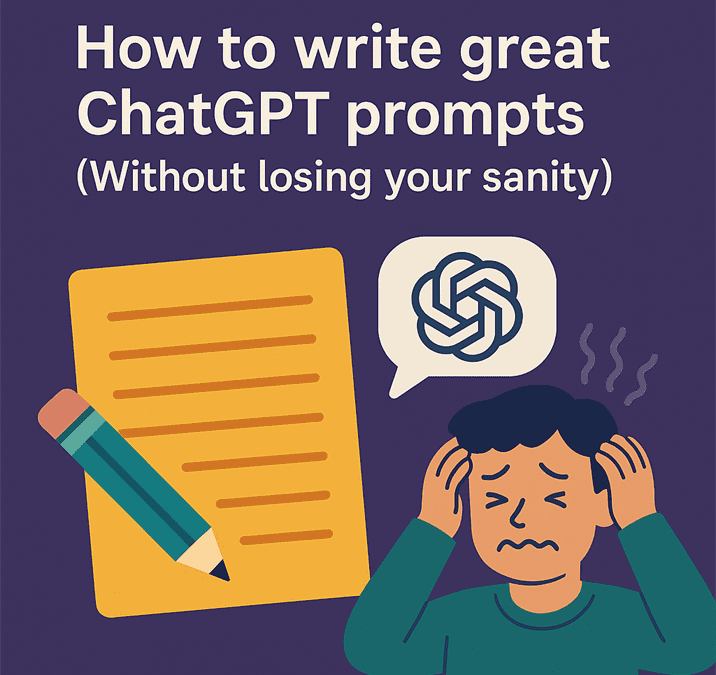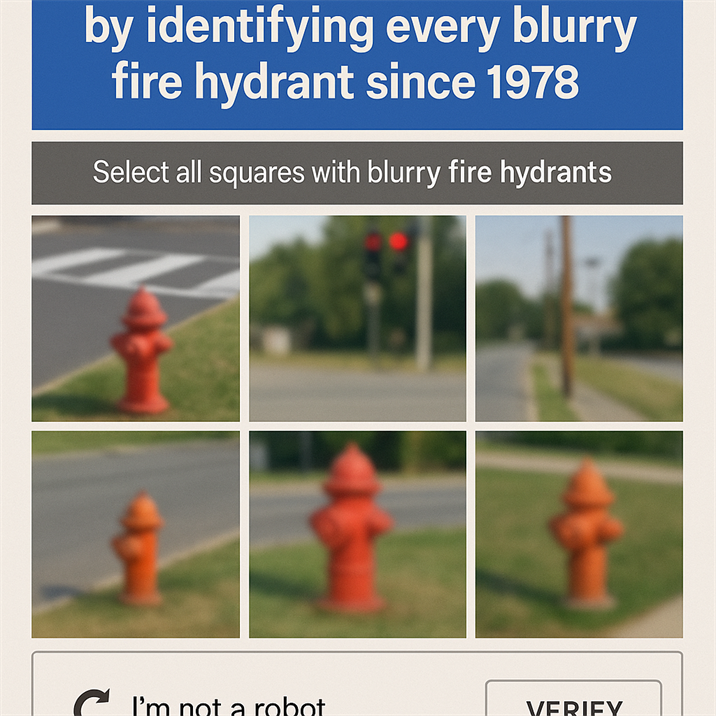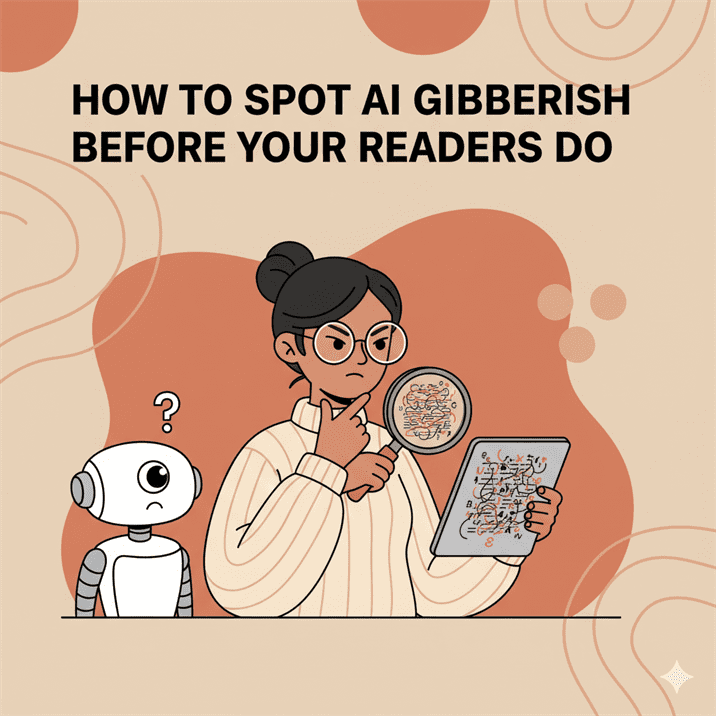How to write great ChatGPT prompts (Without losing your sanity)

Beginner-friendly, ego-friendly, and 74% more fun than a normal how-to blog.
Here’s the thing: A bad prompt is like asking your GPS, “Take me somewhere cool.”
Sure, you’ll end up… somewhere. Maybe a shopping centre. Maybe a swamp.
But probably not where you actually wanted to be.
ChatGPT is the same.
If you toss it a vague, half-formed idea, it’ll happily spin something up. But “something” isn’t the same as “exactly what you had in mind.”
In this guide, we’re going to deconstruct the mysterious art of the good prompt, the kind that makes ChatGPT say, “Oh, I know exactly what you want. Sit tight.”
By the end, you’ll know how to:
- Write prompts that get precisely the results you’re hoping for.
- Save yourself from the dreaded “This is fine, I guess” reaction.
- Make ChatGPT feel like your co-writer, research assistant, and robot creative partner all rolled into one.
And yes, I’ll sprinkle my usual sarcasm, bad metaphors, and examples that make you nod so hard your neck gets a workout.
The 5 most common beginner prompting pain points
The prompt-writing learning curve is less a curve and more a small, friendly speed bump.
You can master it fast, if you know what’s tripping people up.
1. Vagueness
- Example bad prompt: “Tell me about space.”
- What you’ll get: “Space is big. It has planets. The end.”
- What you wanted: A poetic Carl Sagan-level monologue about the cosmic ballet of galaxies colliding in slow motion.
The fix? Add specifics. Think in terms of who, what, when, where, why, and how.
2. Lack of context
If you want a blog post for small business owners who hate marketing jargon, say that.
If you don’t, GPT will happily churn out something that sounds like it belongs in a quarterly shareholder report.
3. Too much at once
Asking, “Write me a business plan, logo design, and 3 TikTok scripts” is like ordering a 7-course meal and a wedding cake at a drive-thru window.
Technically possible, but… let’s pace ourselves.
4. Style mismatch
If you ask for “write about productivity,” GPT will pick a style for you.
Sometimes it’s right, sometimes it’s like wearing a tuxedo to a barbecue.
5. Forgetting you’re the director
You’re not just asking questions, you’re directing a performance.
The more you lean into that, the better your results. Think “boss” energy, not “polite library patron.”
Step 1: Start with your goal
Before you type a single word, decide: What’s the final product supposed to be?
A snappy Instagram caption? A how-to guide? A bedtime story about the emotional struggles of houseplants?
My best tips:
- Pretend you’re briefing a freelancer or intern. If they wouldn’t understand the assignment, ChatGPT won’t either.
- Include your why. “I’m writing this to inspire first-time marathon runners” will shape a very different answer than “I’m writing this to terrify couch potatoes.”
- Anchor your goal in a format: list, essay, Q&A, script, letter, etc.
Make it clear what you‘re looking for and you stand a much higher chance of getting (something close to) what you want.
Step 2: Give context like you’re gossiping
ChatGPT is basically the world’s fastest, most agreeable writer, but it’s also a little like a friend who’ll nod along without asking follow-up questions.
If you give it details, you get richness. If you don’t, you get… porridge.
Instead of: “Write a blog post about baking bread.”
Try: “Write a warm, funny blog post for beginner bakers who have never made bread before. Keep the tone reassuring, add anecdotes about common mistakes, and include at least 3 tips my grandmother would approve of.”
See the difference? The second prompt gives it personality fuel.
Step 3: Specify format (Or forever hold your peace)
Format is the skeleton of your content. Without it, GPT might hand you something shaped like a jellyfish when you wanted a skyscraper.
Common formats to specify:
- Listicle
- Step-by-step tutorial
- Script with scene directions
- Formal essay
- Story with a moral
- Dialogue between two characters
If you want something short, say so. GPT is an overachiever. If you don’t limit it, you might get 1,500 words when you wanted 150.
Although the opposite is usually true. Content of least effort anyone?
Step 4: Sprinkle in style requests
This is the fun part. You get to decide vibe.
Style is where the human fingerprint shows up.
Some style cues you can request:
- “Use playful conversational asides.”
- “Write in the tone of a noir detective novel.”
- “Explain like I’m a 5-year-old.”
- “Sound like a motivational coach who’s slightly too excited.”
Giving two style references (“mix Bill Bryson’s wit with Marie Forleo’s clarity”) produces surprisingly good hybrids.
Step 5: Iterate like a mad scientist
A prompt is rarely perfect on the first try. The real magic happens when you tweak and refine.
Iteration tactics:
- Adjust the tone: “Make this sound friendlier” or “Add more authority.”
- Narrow the scope: “Focus only on examples from the 1990s tech industry.”
- Add constraints: “Keep it under 300 words” or “No jargon.”
Save good prompts in a “Prompt Vault” document. You’ll be amazed at how often you’ll use your go-to prompts.
Ultimate AI prompt examples
(Steal these. Seriously.)
So we covered the what, why and how. Now let’s share some real life examples:
Here’s a prompt that bakes in goal, context, format, style, examples, roleplay, constraints, and iteration hooks, all in one go.
Prompt:
You are an experienced travel copywriter who specializes in creating humorous, slightly sarcastic blog posts for millennials who love adventure but hate tourist traps. Write a 1,000-word blog post titled “Paris Without the Eiffel Tower: The Real Guide” that highlights at least 5 offbeat attractions in Paris. Keep the tone conversational, witty, and self-aware, with occasional playful exaggerations. Use short paragraphs for easy readability, include at least 2 rhetorical questions, and weave in 3 real historical facts that are accurate and verifiable. Start with an attention-grabbing hook, then structure the post with clear subheadings for each attraction. End with a cheeky call-to-action encouraging readers to book a trip. Provide two alternate headline options at the end, one funny and one dramatic. After writing, give me a bulleted summary of the key points for quick reference. If any part feels generic or cliché, suggest at least one alternative phrasing I could use instead.
Why this prompt works:
- Clear goal: The writer knows exactly what they’re getting , a 1,000-word humorous travel blog post.
- Strong context: Audience, tone, and focus are all crystal clear.
- Specified format: Blog post with subheadings + summary.
- Defined style: Conversational, witty, self-aware.
- Examples baked in: Gives examples of tone (“slightly sarcastic,” “playful exaggerations”).
- Role assignment: GPT becomes a “travel copywriter.”
- Constraints: Word count, number of attractions, rhetorical questions, real facts.
- Iteration hook: Asks GPT to suggest alternate phrasing if something feels generic.
Once you run a prompt like this, save it in your “Prompt Vault” and simply swap out the topic, audience, and tone for other projects.
This is how you build repeatable, high-quality workflows with ChatGPT.
Ultimate AI prompt #2: Marketing – Social media campaign
Prompt:
You are a senior social media strategist for a boutique coffee brand targeting Gen Z urban professionals. Write a 14-day Instagram content plan that includes daily post ideas with captions, suggested visuals, and relevant hashtags. The brand voice should be playful, clever, and slightly irreverent — think “your cool friend who’s obsessed with latte art.” Include at least 4 carousel post ideas, 3 reels concepts, and 2 meme suggestions. Ensure captions are under 150 words each, with a clear call-to-action in every post. Use a table format with columns for Date, Content Type, Caption, Visual Concept, and Hashtags. End by suggesting 2 potential influencer collaborations that align with the brand’s vibe. Avoid clichés like ‘but first, coffee.’ Provide alternative phrasing if any line feels overused.
Why it works:
- Goal: Clear deliverable, a 14-day plan.
- Context: Brand tone, audience, platform.
- Format: Table structure for easy use.
- Style: Specific brand personality cues.
- Constraints: Word limits, cliché avoidance.
- Iteration hook: Alternative phrasing request.
Ultimate AI prompt #3: Education scenario – Lesson plan creation
Prompt:
You are an experienced high school history teacher creating a 60-minute lesson plan for a mixed-ability class on the topic “The Causes of the American Revolution.” The lesson should engage visual, auditory, and kinesthetic learners, and include at least 3 interactive elements. Write the plan in a clear structure with sections for Objectives, Materials Needed, Step-by-Step Activities, and Assessment Methods. Keep the language simple enough for students aged 14–16 but avoid talking down to them. Use at least 2 historical anecdotes that are true and verifiable, plus one thought-provoking discussion question per activity. Include an optional homework extension for advanced learners. End the plan with a bulleted teacher’s tip section on common misconceptions and how to address them.
Why it works:
- Goal: Fully formed 60-minute lesson plan.
- Context: Age group, ability level, teaching methods.
- Format: Predefined sections.
- Style: Clear, engaging, accessible.
- Constraints: Accuracy, balance of learner types.
- Iteration hook: Misconceptions/tips section.
Ultimate AI prompt #4: Creative writing – Short story development
Prompt:
Act as an award-winning short story writer blending magical realism and subtle humour. Write a 1,500-word short story about a lighthouse keeper who discovers the light in their lighthouse can reveal hidden truths about people’s pasts. Set the story in a small coastal town in the 1960s. The tone should be warm, slightly melancholic, and quietly whimsical. Include at least 3 named characters, each with distinct voices and quirks. Use vivid sensory descriptions and at least 2 metaphors that involve the sea. Structure the story with a clear beginning, middle, and end, and ensure the resolution is emotionally satisfying but not overly neat. After the story, provide a 150-word “author’s note” explaining your inspiration and themes. Suggest two alternate endings with different emotional impacts.
Why it works:
- Goal: Complete short story with literary qualities.
- Context: Genre, tone, setting, period.
- Format: Story + author’s note + alternate endings.
- Style: Specific imagery, metaphor guidance.
- Constraints: Word counts, emotional tone, structural requirements.
- Iteration hook: Multiple ending options.
These four “ultimate” prompts together form a mini prompt playbook you can adapt for almost any task.
You’re welcome!
Troubleshooting the awkward moments
Even if you use these prompting tips, you may still struggle to generate good results.
| Problem | Why it happens | Quick fix |
| Too generic | You didn’t give enough detail. | Add audience, tone, and purpose. |
| Too long | GPT likes to overdeliver. | Give a word/sentence limit. |
| Too formal | GPT defaults to neutral. | Ask for “casual,” “playful,” or “storytelling” style. |
| Weird facts | AI occasionally invents stuff. | Say “only include verified information.” |
Next steps for the ambitious
Once you’re in the habit of using complex prompts, it’s time to take things further:
- Prompt chaining: Use the output of one prompt as the input for the next.
- Roleplay: Give GPT a character to inhabit (“You’re a grumpy pastry chef…”).
- Prompt templates: Build ready-to-go structures for recurring needs.
Glossary for the newly initiated
- Prompt: Your instruction to ChatGPT.
- Context: Background that makes your prompt work better.
- Iteration: Adjusting a prompt until it’s just right.
- Prompt chaining: Stacking prompts so each one builds on the last.
Go forth and prompt like a legend
You now have the building blocks to write prompts that feel like they were handcrafted by the artisanal bakers of the AI world.
Remember: great prompts are equal parts clarity, context, and creativity. You’re not just typing words, you’re building the stage, writing the script, and casting the lead role!
AI Prompting Frequently Asked Questions
Can I give examples in my prompt?
Absolutely. In fact, you should. Examples are like GPS coordinates for ChatGPT. They keep it from wandering into a weird part of town.
Instead of:
“Write a romantic poem.”
Try:
“Write a romantic poem in the style of Pablo Neruda, using ocean imagery, about someone waiting for their partner to return from a long voyage.”
Notice how much richer the output will be? The more clearly you show the kind of thing you want. By naming styles, formats, or even past outputs you’ve liked, the more laser-targeted the result will be.
What if GPT still misses the mark after I’ve been clear?
Treat it like you would a human collaborator: give constructive feedback. If you say, “This is too formal,” it will adjust. If you say, “Add three specific examples from 1990s pop culture and keep the tone playful,” it will happily redo the work.
And here’s the secret: often, the second or third draft will be the one you keep. This isn’t failure, it’s iteration. You’re refining the request until it’s gold. Even great authors don’t nail the first draft. (Looking at you, Hemingway.)
Should I ask for multiple drafts?
100% yes. Think of it as speed dating for ideas. Asking for “three variations” forces GPT to explore different angles, tones, or structures.
Example:
“Write three different 150-word Instagram captions promoting the same coffee brand — one humorous, one poetic, one educational.”
You can then cherry-pick your favourite or mix and match the best parts. This is a killer move for content creators who want options fast.
How long should my prompt be?
As long as it needs to be for clarity and no longer. A common myth is that “shorter is better.” Nope. Shorter is faster but longer is clearer. If it takes you four sentences to describe exactly what you want, that’s worth it.
Just avoid “prompt bloat”. Don’t add a novel’s worth of backstory unless it’s necessary. GPT is great at pulling context from a concise, well-written paragraph.
Can I give GPT a role to play?
Please do. It’s one of the fastest ways to get personality in the output. When you tell GPT to “act as,” you’re essentially switching on a specific creative lens.
Example:
“Act as a sarcastic travel blogger who hates tourist traps. Write a review of Paris.”
This instantly shifts vocabulary, pacing, and even what details GPT chooses to highlight.
Is it okay to combine multiple instructions in one prompt?
Yes but be careful. Too many requests at once can dilute the focus. It’s like asking, “Make me spaghetti, also a salad, and also design my wedding invitations.” GPT will try, but it’ll be a compromise.
If you really need multiple outputs, consider breaking them into separate prompts or using prompt chaining (feeding the output of one into the next).
How do I stop GPT from making up facts?
This one’s important: ChatGPT is not a fact-checking tool by default. If you care about accuracy, you need to say so explicitly.
For example:
“Only include facts that are verifiable through reputable sources. If unsure, say ‘I don’t know’ instead of guessing.”
You can also follow up with your own quick fact-check before publishing, because thought leaders don’t just sound smart, they are smart.
What’s the single best tip for better prompts?
Imagine you’re explaining what you want to a brilliant but completely unfamiliar freelancer. Assume they know nothing about you, your audience, or your goals. Now tell them exactly what they need to deliver something great.
That mental shift, from “type a question” to “write a clear creative brief”, is the difference between decent and outstanding results.



